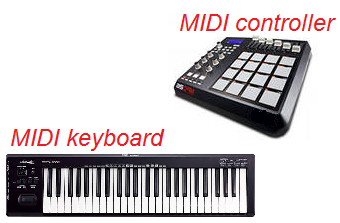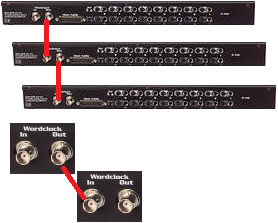Digital input and digital output of sound card is connectors for:
- pass binary audio data;
- connect audio card to other devices for control and synchronization.

If you buy "AuI ConverteR PROduce-RD" (2023/12.x version) from 24 August 2023 to 24 October 2023, you will get free update to version 2024 (13.x) after its release.
The beginning of articles about sound cards here...
1. SPDIF is digital input or output for transmit/receive audio to/from a recording device, different sound card, DAC/ADC, amplifier or AV-receiver without loss of quality.
 SPDIF (RCA type)
SPDIF (RCA type)
 optical SPDIF (fiber or optical type female - placed at card)
optical SPDIF (fiber or optical type female - placed at card)
 optical SPDIF (fiber type male - cable connector)
optical SPDIF (fiber type male - cable connector)
SPDIF modes:
- AES / EBU - studio professional format digital audio;
- PCM - uncompressed audio stream;
- AC-3, DTS, Dolby Digital - compressed multi-channel audio.
Pass-through (transit) term means
sound card passes through (without changing)
coded (AC-3, DTS, Dolby Digital) multichannel soundtrack (as recorded on DVD)
to AV-receiver.
Receiver decodes soundtrack to multichannel PCM stream.
Digital input/output SPDIF can be used to synchronize several sound cards. This is necessary to increase number of channels recording and/or playback.
2. MIDI input and output are special connectors for hardware MIDI-keyboard or controller, synthesizer, audio processor.
 MIDI Input and Output connectors
MIDI Input and Output connectors

3. Wordclock are input and output to synchronize multiple sound cards or other devices.
 Wordclock connector. Female connector installed at device
Wordclock connector. Female connector installed at device
 BNC cable connector for Wordclock
BNC cable connector for Wordclock
For multi-channel recording used two or more sound cards (same or different) synchronized by clock (sample rate). For synchronization used special input and output Word Clock (bayonet type) or SPDIF.
 Wordclock devices
Wordclock devices